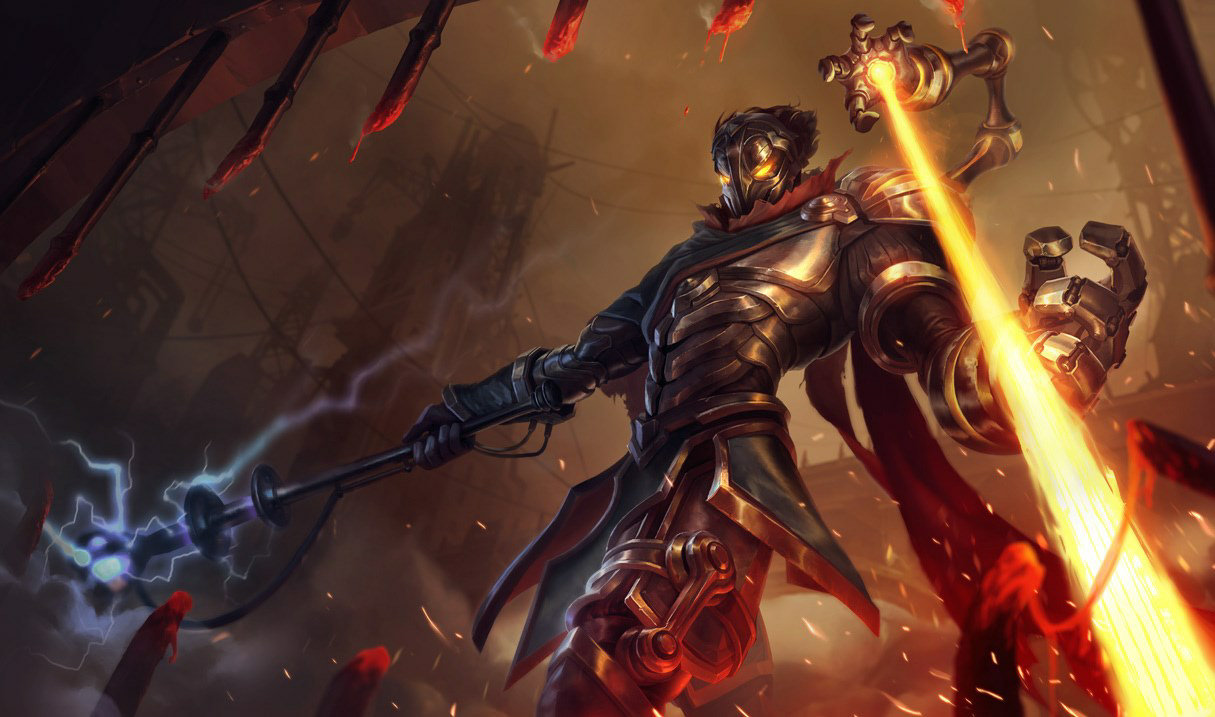If you’re a League of Legends player, or any other MOBA player for that matter, chances are you’ve gone against a champion or two that you just find extremely difficult to face.
It’s not that your enemy opponent is superior to you in terms of skill – you might even be a shade higher than them in terms of personal finesse. No, the odds just seem to be stacked against you simply because the champion they are using is vastly superior to your own.
This usually leads to us criticize the game developers for the unfairness of it all. We feel (and sometimes rightly so) that we’re at a disadvantage for not playing the champion that is currently the strongest or most popular pick. We should be allowed to play whatever champion we want and have an equal chance of winning with them. After all, that’s the reason the game has such a huge roster, right?
Unfortunately it’s a problem that’s far more complicated to address than you think.
Why this problem exists
One thing League tries to give us is variety.
As of right now, League of Legends boasts over 120 different champions, each offering a completely different set of skills for you to use. Sure, they are similar to one another in the sense that they all a certain archetypal role (tank, assassin, marksman, etc.) but they all have their own signature skillsets which stop the monotony.

The main point of balancing in a game isn’t just for the sake of leveling the playing field.
It’s here that the problem arises. This game is doing its best to give you a different experience whenever you play different champions. Each comes with its own strengths and weaknesses, but no one can predict just how far the player can take it. A good player knows how best to play off the strengths while minimizing the weaknesses. And sometimes they do it so well that they make those weaknesses insignificant.
And then there are the champions who, while they didn’t seem too bad on paper, are a bit too strong in practice, making them outright frustrating to play against. Yes, they still do have weaknesses that theoretically could be exploited, but actually doing so is much harder than it should be.
So why not just add some weaknesses?
It sounds simple when you say it, right?
But what happens when you actually do increase the weakness of a champion? The popularity drops of course, and you suddenly start seeing more champions on the rift – which is a positive.

REMEMBER HIM? ANYONE?
But sometimes nerfing can go a little too far and make a champion nearly useless in a particular meta. A prime example of this in League of Legends is Yorick. Long ago, this champion was one of the tier 1 picks in the top lane. But he was a bit too frustrating to play against. This lead to him being nerfed, and now we barely even see him in matches anymore.
In a game that tries to offer you as much variety possible, essentially removing the potential choices available to you is detrimental, even if the intent was to make other champions more viable picks.
The not-so-hidden aftereffects
In the wake of a nerf, something else always steps up to fill in the void. It’s come to a point that when developers weaken certain champions strictly on numbers, other champions that have remained untouched in the intital slew of balancing attempts suddenly become strong – simply because they now boast better numbers than their fallen brethren. Even if that champion hasn’t been useful or relevant for months or years.

Viktor is a prime example of a champion becoming an attractive pick after years of seeing little to no action.
And so, the cycle repeats itself.
Immunity from balance changes
Out of everything, this just might be the only time where we can hold the developers even a little responsible.
Irelia Certain champions simply have a skillset that make it rather impossible to effectively balance them. Oftentimes you’re only left with two choices here, either you make them completely irrelevant by heavily nerfing them or you tweak the numbers just a bit so that they’re more manageable.

Manageable…yeah.
Or you just completely give up and hope for the best. Perhaps by introducing newer champions that are at the same power levels.
Thankfully the number of champions providing this problems is in the minority. Doesn’t make it any less annoying for the developers or the players though.
So what can be done?
Honestly? I can’t think of anything more to do about this than what Riot Games is already doing; rolling out patches every few weeks and making balance changes again and again.
The main point of balancing in a game isn’t for the sake of leveling the playing field, at least that’s not what I think. It’s more for the sake of removing the ‘0 counterplay’ problem you encounter from time to time. It’s easily one of the most frustrating things to face in any game, facing something that you feel no matter what you do you still lose against.
With every patch some champions get stronger, some get weaker. The stronger champions start to gain popularity, especially the ones who are really good at what they do while having minimum weaknesses. To combat this a patch is rolled out, buffing other weaker champions in the hopes that they get picked more while nerfing the strong ones in order to take care of the the ‘0 counterplay’ problem.
It’s always been this way, and it likely will always be this way as long as the champion pool continues to offer diversity. It’s ironic how trying to offer multiple choices to players has only limited them, but if the game tried to do the opposite then all it would offer is stale gameplay.
At least this way we get to see the rise and fall of champions, the best we can hope for is that our favorite champions get to shine for a few moments as well.







Published: Sep 18, 2015 02:44 pm